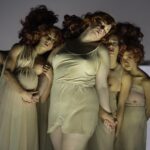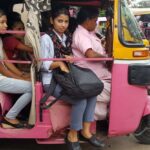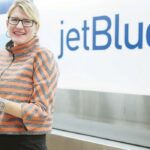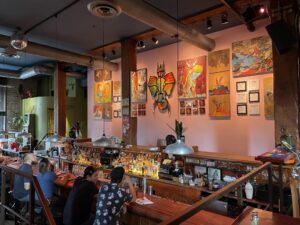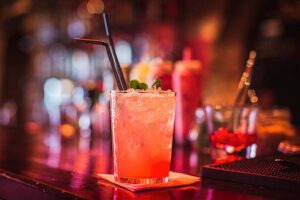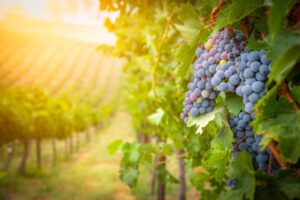
Every morning Debra Mathy wakes up and looks out her window across rows of grapevines over rolling hills sprinkled with houses.
Debra, 41, is not only living her dream, but living her guests’ dreams as well, she says about owning Dutcher Crossing Winery.
“I get to wake up and see the vineyard and do this day-to-day. [It] is the most exciting thing,” says Debra, who her wine team and she get the most pleasure out of sharing the dream with their guests.
“We hear more than once, ‘God you have the best job in the world.’ Well, we agree, but you can be part of it for the next hour or weekend that you are with us,” says Debra. “That’s the most excitement we get is to be able to share our dream with them and make it as much of a reality for them. That’s the most fun about it.”
Nestled in Dry Creek Valley of Sonoma, Calif.’s wine country, Dutcher Crossing produces its award-winning handcrafted wines from vineyards that were planted about 35 years ago, and then replanted once during that time.
Debra is the second owner of the winery founded by Bruce Nevins and Jim Stevens, in 2001. Nevins and Stevens, who operated Perrier North America for over 30 years, officially opened Dutcher Cross’s doors to welcome guests in 2005.

Even thought Dutcher Crossing wasn’t for sale at the time, Debra who was following her heart and a childhood fantasy, was the perfect fit, just a bit early, in the men’s 10 year plan for the winery. Rather than waiting by sticking to their original plan, Debra, Bruce and Jim shook hands during Winter Wineland, an annual wine tasting event, and closed the deal in 2007.
A month and a half later, Debra was packing up her Colorado home, where she lived for 14 years, and moved further west to California’s wine country.
At the time Bruce and Jim were in the midst of transforming Dutcher Crossing into a state of the art solar powered winery. The men installed a solar electric system that generates enough clean electricity to power 26 average homes daily. The system also spares the air from nearly 29 tons of harmful greenhouse gasses annually, that equates to more than 880 tons over the systems lifespan. An added bonus is that the system will have paid for itself in two more years, according to early estimations, reported RedOrbit.com.
Dutcher Crossing is known best for its San Francisco Chronicle 2009 Gold Medal winning Sauvignon Blanc along with its other flagship wines Cabernet and Syrah. Debra and Kerry Damskey, winery’s original winemaker, now have their eyes set on creating their own unique Zinfandel, especially since they are in the heart of Zinfandel country, she says.
Together they make every decision about crafting the wines and Bruce and Jim are only a phone call away when Debra needs to tap into their expertise. Debra also occasionally receives guidance from some encouraging men and pioneering women winery owners, she says. She didn’t think about being a single woman away from her family when she purchased the Dutcher Crossing. While some of her business negotiations weren’t taken as seriously because she was a woman in a male dominated industry, at other times she’s benefited because she is a woman. The bottom line is earning respect by demonstrating knowledge of the industry.
“I never thought I would be as involved as I am and to be able to contribute to that is personally my biggest thing that I’m proud of other than the Dutcher Crossing family that we have here,” says Debra, a former educator with a background in human nutrition and dietetics and physical education, about crafting Dutcher Crossing’s wines.
“We are still a young brand and building and growing and having a lot of fun along the way,” she adds about journey with her wine team during the last four years and finally having the right team in place.
The team of five employees plus three part-time or seasonal staff, help create and sell the winery’s 8,000 cases of its award-winning wines they produce annually, double the number it was when she bought the vineyard.
While the winery is growing, Debra and her team prefer to be a “hidden jewel” in the valley handcrafting all of the wines they produce and knowing their customers.
“We like to know our guests and who is drinking the wine,” says Debra about the nearly 100 wine club members and guests.

Sense of place
Debra is dedicated to carrying on Bruce and Jim’s vision for Dutcher Crossing, which was to build a “sense of place,” she says.
“It really is a memorable sense of place,” says Debra, who has contributed to the atmosphere and esthetics of the winery by crafting artesian wine that is truly something to reminisce about around the dinner table with good friends and family.
Upon entering Dutcher Crossing, guests are greeted by Dutchess, Debra’s golden retriever, just one of her duties as a “part of the winery’s winemaking team.” Her other responsibilities are supervising the vineyards, that is when she’s not making friends with visitors and begging for food around the picnic tables.
In memory of Debra’s father, a vintage high-wheel bicycle that once belonged to him, is prominently as Dutcher Crossing’s logo and the original resides in the tasting room.
Wine visions
A Wisconsin businessman, Debra’s father set her on the path to realize her childhood fantasy.
“When my dad got sick he asked, ‘Do you really want to do this?’” says Debra.
At the time, Debra had given up the year before her father approached her to help her make her dream a reality. In her early 30s, after half a dozen years of plotting and scouting out wineries to make her dream come true she lost her patience.
The dream from her junior year trip to Rhone, France with her French club, where she really fell in love with wine after growing up drinking German Riesling and Merlot, was worn and tattered from years of false hopes, she says.
French wasn’t Debra’s forte, but she was awed, stunned and inspired by the “beautiful vineyards in France,” she says.
She continued developing a passion for wine, German whites in particular, throughout college and into her first career as an elementary physical education teacher returning to Europe.
“I remember sitting in an Austrian weingarten near Vienna,” she reminisces. “I fell in love with the region, culture, cheese, bread and wine.”
Upon returning to the states she thirst for wine, but in college she could only afford $5 wines. Cheap wine and a limited budget didn’t stop her. She began exploring America’s wine regions soaking in everything she could learn to understand the wine business and what wines America had to offer.
Influenced by her father’s business sense, Debra realized that she had to figure the financial model that would make a winery be a viable and sustainable business. She also had the wisdom to realize that it could take 10 – 15 years and the patience to know when the time would be right.

Ill, her father realized his only daughter’s dream wasn’t a phase. He approached her with a plan that revived her dream. They hired an Australian wine consultant Bruce McDougall who mentored and taught Debra about the ins and outs of the wine industry for the next four years. They searched California, Oregon, and Washington wine regions reviewing a couple 100 sites that range from raw to complete vineyards and wineries.
“We wanted to come where the biggest heartbeat was in the wine industry,” says Debra about choosing established regions over more developing and pioneering East Coast and Midwest wine regions where she would be closer to her two brothers and her mother. Her brothers are both running the family corporation in Wisconsin, which isn’t a part of Dutcher Crossing, she says.
Her father didn’t survive to see his daughter’s dream become a reality with Dutcher Crossing, says Debra, but she’s reminded everyday of the gift he gave to her that she’s simply where she wanted to be in the sunshine in the place she loves, Dutcher Crossing in Dry Creek Valley.
To contract an original article, purchase reprints or become a media partner, contact ">editor [@] girlsthatroam [.] com.

